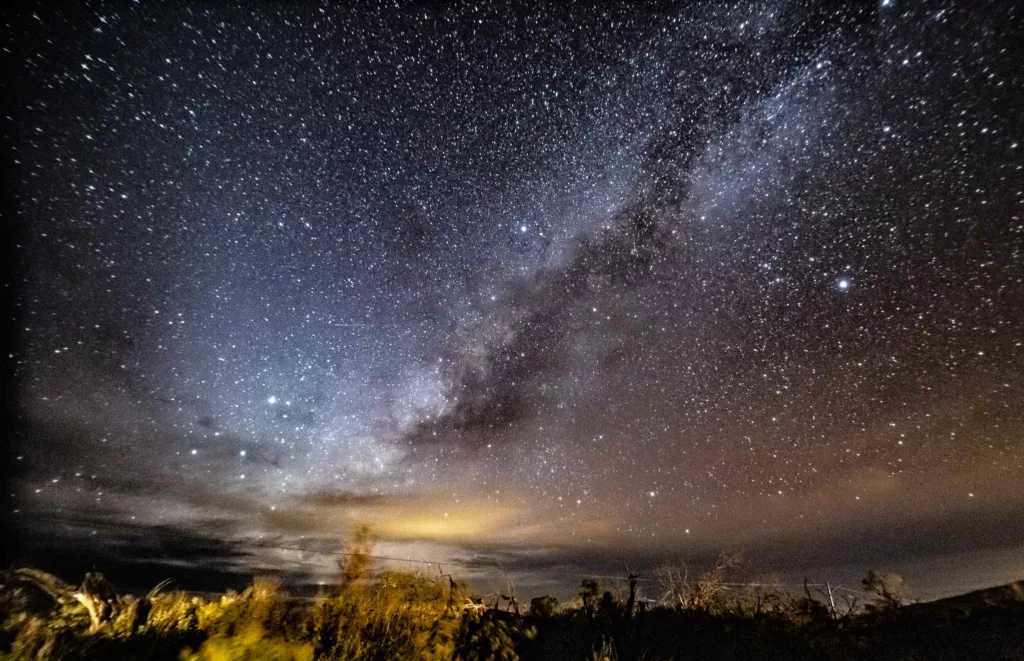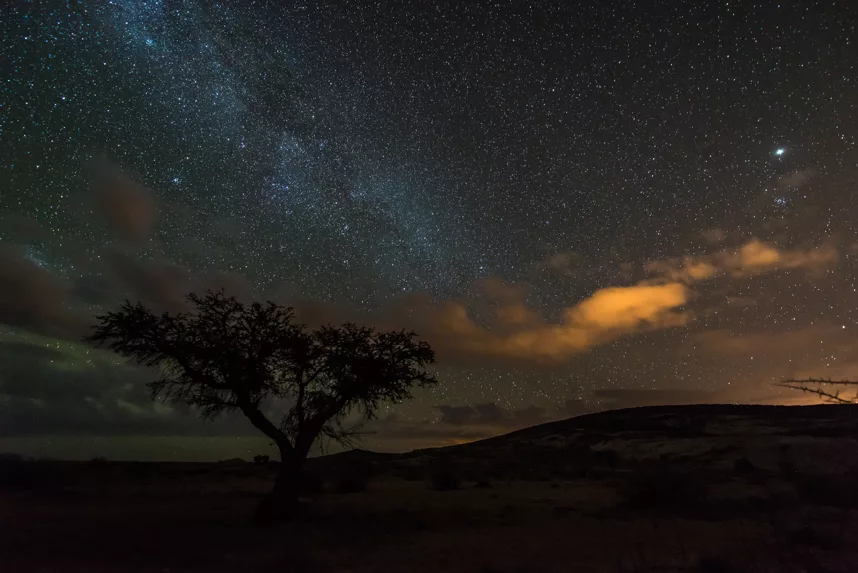Stargazing Destinations
Gazing up at the night sky, one can’t help but be captivated by the vast expanse of twinkling stars, distant galaxies, and the ethereal glow of the Milky Way. Stargazing, an age-old pastime, connects us to the universe, offering a window into the infinite and the profound mysteries of the cosmos. Yet, in our modern world, where city lights outshine the stars, the quest for pristine, dark skies has become a journey in itself.
The art of astronomical observation is not just about having the right equipment; it’s also about being in the right place. Location plays a pivotal role in our ability to peer deep into space. From remote deserts to high-altitude mountains, certain spots on our planet offer unparalleled views of celestial wonders. These places, free from the blinding glare of urbanization, remind us of the beauty of the universe and the importance of preserving our natural nightscapes.
As we embark on this celestial exploration, let’s delve into the significance of location in stargazing and discover the world’s hidden corners where the stars shine the brightest.
Selection of top stargazing destinations around the world
| Destination | Location | Best Time to Visit | Key Features |
|---|---|---|---|
| Mauna Kea | Hawaii, USA | April to October | Home to world-class observatories, clear skies |
| Atacama Desert | Chile | Year-round | Extremely dry, minimal light pollution |
| Namib Desert | Namibia | April to September | Dark skies, unique landscape |
| Cherry Springs State Park | Pennsylvania, USA | May to September | Renowned for dark skies, accessibility |
| Jasper National Park | Alberta, Canada | October to April | Dark Sky Preserve, stunning natural beauty |
| Sedona | Arizona, USA | Year-round | Red rocks with clear skies, serene environment |
| La Palma | Canary Islands, Spain | April to October | High altitude, clear skies, observatory access |
| Uluru | Australia | May to September | Iconic natural landmark, minimal light pollution |
| Brecon Beacons | Wales, UK | September to April | Designated Dark Sky Reserve |
| Aoraki Mackenzie | New Zealand | April to September | International Dark Sky Reserve, spectacular views |
The Importance of Dark Skies
In an age where cityscapes are illuminated around the clock, the serene beauty of a star-filled night sky is becoming a rare sight. Dark skies, once taken for granted, are now a treasured resource for astronomers and stargazers alike. But what’s dimming the brilliance of our celestial canopy?
Enter light pollution, the unintended consequence of excessive and misdirected artificial lighting. This luminous clutter not only obscures our view of the stars but also disrupts ecosystems and has potential health implications for humans and wildlife. For stargazers, light pollution means fewer stars to see. Diminished clarity of celestial objects, and a loss of the awe-inspiring experience of connecting with the universe.
Recognizing the value of pristine night skies, various global initiatives have emerged to combat light pollution. Dark sky preserves, designated areas where artificial light is minimized, have become sanctuaries for stargazers. These preserves, often located in remote regions or national parks, offer an unspoiled view of the cosmos. Allowing celestial wonders like meteor showers, planets, and the Milky Way to shine in their full glory.
Beyond preserves, grassroots movements and organizations are working tirelessly to educate the public. Advocate for responsible lighting, and promote policies that protect our night skies. Their efforts underscore a collective realization: the stars are a shared heritage. And preserving the darkness is crucial for future generations to gaze upon the universe’s wonders.
In the dance of light and darkness, it’s clear that dark skies are not just an astronomical luxury but a necessity. Ensuring that the cosmic show goes on, night after radiant night.
Top Stargazing Destinations in North America

North America, with its vast landscapes and diverse terrains, offers some of the world’s most spectacular stargazing spots. From the volcanic peaks of Hawaii to the dense forests of Pennsylvania, the continent beckons astronomers and dreamers alike to witness the celestial ballet.
Mauna Kea, Hawaii: Rising majestically from the Pacific, Mauna Kea’s dormant volcano provides an unparalleled vantage point. At over 13,000 feet, its summit is above the cloud layer, ensuring clear skies and minimal atmospheric distortion. Home to some of the world’s most advanced observatories, it’s a mecca for professional and amateur astronomers alike.
Cherry Springs State Park, Pennsylvania. Nestled within the dense woodlands of the Susquehannock State Forest. Cherry Springs is a haven for stargazers on the East Coast. Designated as a Dark Sky Park, it offers pristine views of the Milky Way, meteor showers, and distant planets. All free from the glow of urban light pollution.
Natural Bridges National Monument, Utah. Renowned for its breathtaking rock formations, this national monument also boasts some of the darkest skies in the country. The natural stone bridges, illuminated under the starry canopy, create a surreal and enchanting landscape for nighttime observation.
As we journey through these destinations, it’s evident that North America’s stargazing spots are not just about the stars. They’re about the experience—the tranquility of a dark sky, the thrill of spotting a shooting star. And the profound connection to the universe that such places evoke. Whether you’re an experienced astronomer or a curious traveler, these locations promise a celestial experience like no other.
Stellar Spots in Europe and Africa

The old-world charm of Europe and the vast, untamed landscapes of Africa offer a rich tapestry of stargazing destinations. These continents, steeped in history and natural beauty, provide a backdrop for some of the most awe-inspiring celestial views.
La Palma, Canary Islands: Perched off the northwest coast of Africa, La Palma is a jewel in the Atlantic. The island’s high-altitude observatories, particularly the Roque de los Muchachos Observatory, benefit from clear, stable air. Making it one of the premier stargazing spots in the world. Here, the Milky Way shines so brightly that it casts shadows on the ground.
Tenerife, Canary Islands: Another gem in the Canaries, Tenerife boasts the Teide Observatory. Situated on Mount Teide, Spain’s highest peak, the observatory offers panoramic views of the heavens. Including spectacular sunsets that give way to a star-studded sky.
NamibRand Nature Reserve, Namibia: Stretching across the Namib Desert, this reserve is a sanctuary of natural beauty and dark skies. Recognized as Africa’s first International Dark Sky Reserve, NamibRand offers a celestial spectacle with minimal light interference. Here, the southern constellations, the Magellanic Clouds, and even the zodiacal light dazzle observers.
Europe and Africa, with their unique blend of culture, geography, and history, offer more than just stargazing spots. They offer experiences. Lying beneath the vast African sky or gazing up from a European mountaintop, one feels a deep connection to the cosmos. A reminder of our tiny yet significant place in the grand tapestry of the universe.
Gazing Under the Skies of Asia and Oceania
From the towering Himalayas to the expansive outbacks of Australia, Asia and Oceania present a diverse range of locales for celestial enthusiasts. These regions, with their unique landscapes and cultural richness, offer some of the most pristine skies for stargazing.
Ladakh, India. Nestled amidst the rugged terrains of the Himalayas, Ladakh, often referred to as the ‘Land of High Passes’. Provides an elevated platform for stargazing. The thin atmosphere, coupled with minimal light pollution, makes it an ideal spot to observe the Milky Way, meteor showers, and a plethora of stars and planets.
Aoraki Mackenzie Dark Sky Reserve, New Zealand. Encompassing the Aoraki/Mount Cook National Park, this reserve is a haven for southern hemisphere stargazing. The clear, dark skies reveal the Southern Cross, the Magellanic Clouds. And the mesmerizing dance of the Aurora Australis on certain nights.
Coonabarabran, Australia: Dubbed the “Astronomy Capital” of Australia, Coonabarabran is home to the Siding Spring Observatory. Located in New South Wales, the town offers spectacular views of the southern night sky. With its dense star clusters, nebulae, and the core of the Milky Way.
Asia and Oceania, with their vast terrains and ancient traditions, invite stargazers to embark on a celestial journey like no other. Whether it’s witnessing a meteor shower over the Himalayan peaks or tracing the constellations from the Australian outback. These regions promise a deep and enriching connection with the cosmos.
South America’s Celestial Canvases
South America, with its diverse landscapes ranging from the towering Andes to the vast Amazon rainforest, offers a rich palette of stargazing locales. The continent, steeped in ancient traditions where the stars played pivotal roles in myths and navigation. Continues to be a magnet for those seeking celestial wonders.
Atacama Desert, Chile. Often described as the driest place on Earth, the Atacama Desert provides an almost otherworldly setting for stargazing. With its high-altitude plains and virtually non-existent cloud cover. It’s no wonder that the desert houses some of the world’s most advanced observatories, like the ALMA and the Paranal Observatory. Here, the night sky is so clear that the Milky Way casts a silvery glow on the desert sands.
Pantanal, Brazil. While more renowned for its biodiversity, the Pantanal, one of the world’s largest tropical wetlands, also offers pristine skies for celestial observation. Away from the bright lights of urban centers, the vast open landscapes of the Pantanal become a canvas for the stars, planets, and meteor showers.
Salta, Argentina: Located in the northwest of Argentina, Salta offers a blend of cultural richness and clear skies. The region, with its valleys and mountainous terrains, provides elevated spots perfect for setting up a telescope and diving deep into the southern celestial wonders.
South America, with its tapestry of cultures, landscapes, and ancient star-studded stories, beckons astronomers and dreamers alike. Whether it’s deciphering the constellations from an Andean peak or simply lying back on a Brazilian plain to count shooting stars, the continent promises a celestial experience that resonates with both the heart and soul.
Tips for Planning a Stargazing Trip
Embarking on a stargazing adventure is more than just picking a destination. It’s about ensuring the best possible experience under the stars. Whether you’re a seasoned astronomer or a curious traveler, a few key considerations can make all the difference in your celestial journey.
Considering the Lunar Cycle: The moon, in all its splendor, can outshine many celestial objects. Planning your trip around the new moon phase ensures the darkest skies, allowing faint stars, galaxies, and meteor showers to be more visible.
Essential Equipment. While the naked eye can behold many wonders, a good pair of binoculars or a portable telescope can enhance the experience. Don’t forget essentials like a red flashlight (to preserve night vision), star maps or stargazing apps. And a comfortable reclining chair or blanket.
Dress for the Occasion: Nighttime temperatures can drop significantly, especially in desert or high-altitude locations. Packing warm clothing, hats, and gloves can make your stargazing experience more comfortable.
Safety First: If you’re heading to a remote location, inform someone of your plans. Carry essentials like water, snacks, a first-aid kit, and a fully charged phone. If you’re unfamiliar with the area, consider hiring a local guide or joining a stargazing group.
Respect the Environment: Many top stargazing spots are in ecologically sensitive areas. Adhere to leave-no-trace principles, minimize light usage, and avoid disturbing local wildlife.
Stay Patient and Open-minded: The universe operates on its own timetable. While you might have a list of celestial objects to see, sometimes the best moments come from simply lying back and taking in the vastness of the cosmos.
Planning a stargazing trip is as much about the journey as the destination. With a bit of preparation and an open heart, the night sky can offer moments of wonder, reflection, and a deeper connection to the universe around us.
Conclusion
As we traverse the globe in search of the perfect stargazing spot, it becomes evident that the universe’s wonders are not confined to any one location. Every corner of our planet offers a unique vantage point to the vast expanse above, reminding us of our shared heritage under the stars.
The act of looking up, of seeking out constellations, planets, and distant galaxies, is a testament to human curiosity and our innate desire to connect with the cosmos. It’s a journey that transcends borders and cultures, uniting us in wonder and awe.
While telescopes and dark skies enhance the experience, the true essence of stargazing lies in the moments of reflection, the realization of our place in the universe, and the infinite possibilities that lie beyond our blue planet.
So, whether you’re gazing from the desolate plains of the Atacama, the serene landscapes of New Zealand, or your own backyard, remember that the sky above is a canvas of stories, mysteries, and dreams. And as you look up, know that the same stars have inspired generations before and will continue to inspire generations to come.
FAQ Section for “Stargazing Destinations”
What Makes a Good Stargazing Destination?
A combination of clear skies, minimal light pollution, and unique geographical features contribute to an ideal stargazing destination.
Can I Stargaze at Any Time of the Year?
While stargazing can be done year-round, some destinations have specific times when conditions are best.
Do I Need Special Equipment for Stargazing?
Basic stargazing can be done with the naked eye, but a telescope or binoculars enhance the experience.
Are There Stargazing Tours Available?
Many popular stargazing destinations offer guided tours, which can be beneficial for beginners.
How Important is Altitude for Stargazing?
Higher altitudes can offer clearer skies due to reduced atmospheric interference.
Can Urban Areas be Good for Stargazing?
While possible, urban areas often suffer from light pollution, which can hinder the stargazing experience.
Should I Consider the Moon Phase for Stargazing?
Yes, a new moon phase is best for stargazing as the sky is darker with less moonlight.
Are National Parks Good for Stargazing?
Many national parks are excellent for stargazing due to their preserved natural darkness.
How Do I Prepare for a Stargazing Trip?
Bring appropriate gear for the night and check the weather forecast. A star map or app can also be useful.
Is Stargazing Possible Near the Polar Regions?
Yes, regions near the poles offer unique opportunities like viewing the Northern or Southern Lights.

